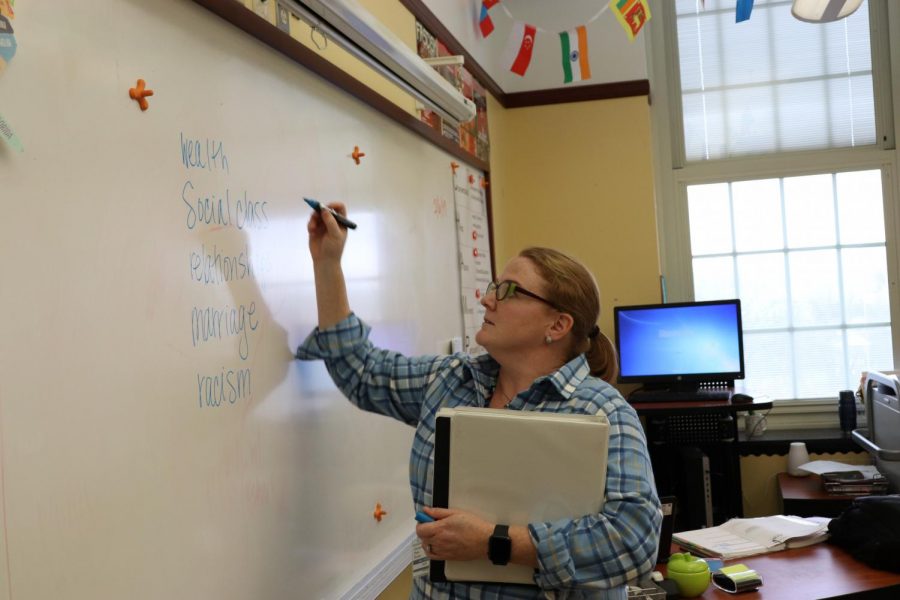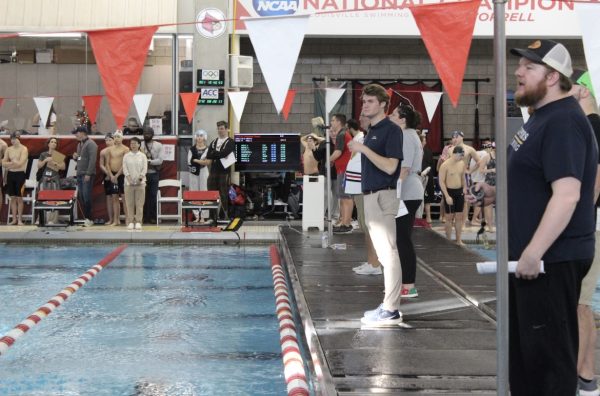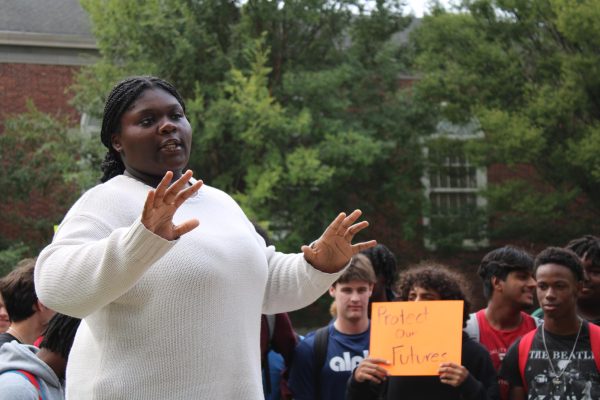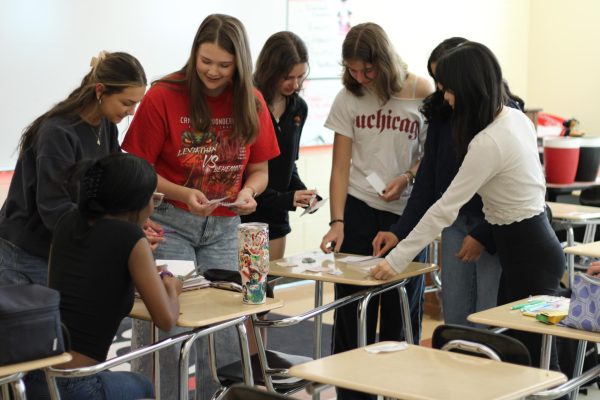The Musical Chairs of Academia
English teacher Julie Vernon started at WHHS this year.
The 2018-19 school year has been hectic for students and faculty alike. It seems like each quarter some students are alerted that they are being reassigned to a different teacher. At the end of first quarter, many sophomore English students were called into the auditorium and told that they would be switched out of their current English class and into a class of a recently hired teacher, Julie Vernon.
At the end of second quarter, a similar instance occurred, in which a total of three levels of Spanish students received a letter on exam day alerting them that they were going to be assigned to different teachers for the beginning of second semester. Two bells of Elizabeth Owens’ Spanish 2 classes were reassigned to Jennifer Vargas, whose Spanish 3AA classes were given to Owens. In addition, two classes of Spanish 1AA were switched between Erin Fite and Kathleen Wilke.
These switches happened for a variety of reasons, from class sizes to AP preparation, but how do they affect the student body?
“It’s frustrating to leave a class and start a new one,” Jonathan Levy, ‘21, said. Levy has been switched out of classes twice this school year, in both his English class first quarter and his Spanish class second quarter, neither of which he had any say in.
This feeling of frustration comes from the need for students to acclimate to a completely new teacher in the middle of the school year. “It’s harder to pick up where we left off in the curriculum with a new teacher, especially when she does things differently than the class we are used to,” Samantha Stenger, ‘20, said. Students do have different opinions on different teachers, but there is a potential for students to adjust and thrive in their new classes, as seen in Levy’s case.
“It’s ironic, because at first I was so mad about the (English) switch, but it ended up being a great thing, because my new teacher (Julie Vernon) is awesome,” Levy said.
On the other hand, many students are irritated by their teacher reassignments; “I think that it is unnecessary to switch around in the middle of the year, it would be different if they switch the teachers before school started… now it’s just another speed bump in my Spanish experience,” Stenger said.
This raises a key question: why weren’t these changes made at the beginning of the school year?
In the case of the English classes, the class reassignments were executed in order to remedy a problem concerning class overcrowding in sophomore English classes. Nearly every 10AA English class had over 30 students, classes were overloaded with too many students, and, in some cases, violated contractual agreements with the teachers union.
The solution to this problem was to hire a new English teacher, and since the issue had been discovered after the school year began, the only option was to hire the teacher and shuffle classes during the school year.
Concerning the Spanish classes, although administration declined to comment on the topic, the heads of the Modern Foreign Language Department cite AP test preparation as the cause of the Spanish class reassignments. Specifically surrounding Vargas and Owens’ classes, in which the 3AA classes, the level prior to AP, were originally assigned to Vargas.
Upon further investigation, the department realized that “one of the new teachers we hired this school year was more qualified for teaching students on an AP course, as she had more experience,” said Johanka Hart-Thompkins, one of the heads of the Modern Foreign Language Department.
Why this was not done prior to the beginning of the school year is muddied, but is overall attributed to the late addition of Owens to the WHHS faculty, as she was hired in July of 2018, after schedules had begun to be drawn up, while Vargas was hired two months before in May.
Class reassignments can throw a wrench in not only student’s academic life, but also their morale. Being forced to acclimate to an entirely new teacher in the middle of the school year can be challenging for all involved. Nevertheless, WHHS students have shown that they are able to make it work, even if they are resistant. Many of these changes were made in order to benefit the students, but many students are more angered by the changes than grateful. The effect on students needs to be taken into account during any decision involving students.
Your donation will support the student journalists of Walnut Hills High School. Your contribution will allow us to purchase equipment, cover our annual website hosting, printing costs and offset competition and conferences fees for students.













